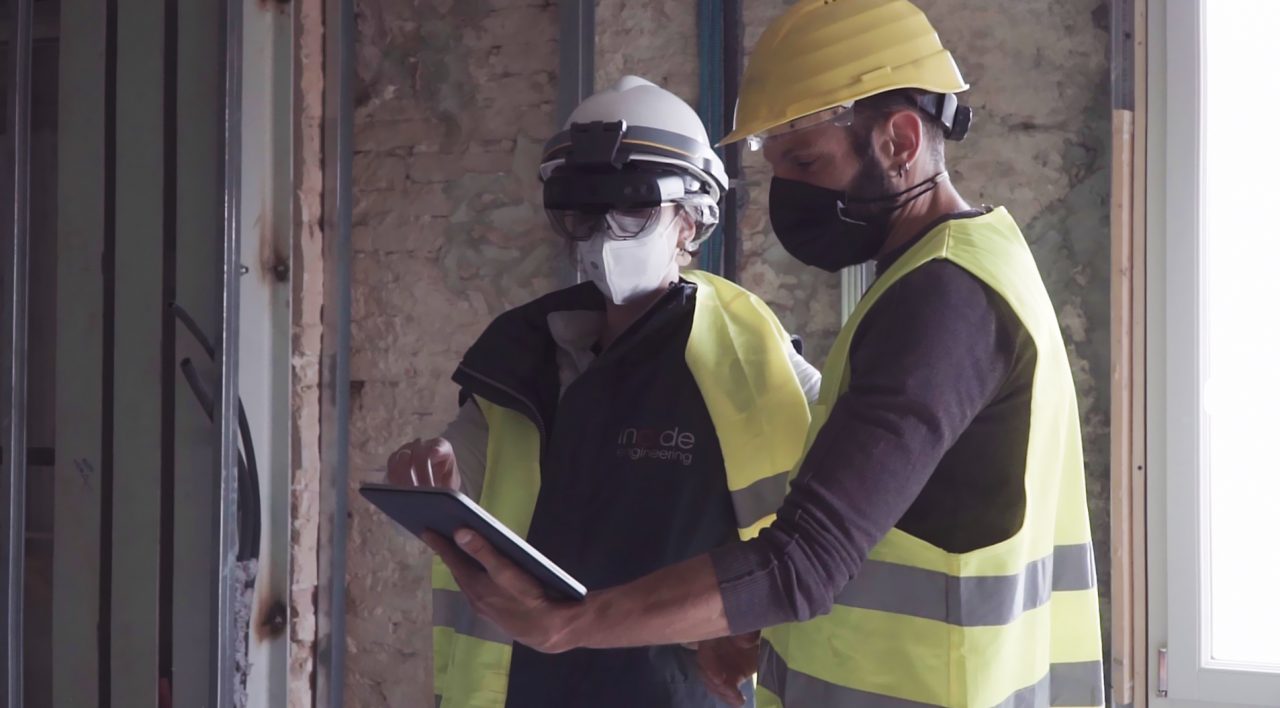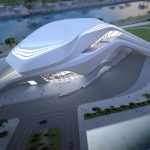The interaction between BIM and Augmented Reality with Hololens 2
What will be the future of construction sites? Thanks to Augmented Reality, the construction site comes to life and you can see the building in every detail, monitoring, comparing and saving in the realization of projects, in a perspective that chooses maximum effectiveness and quality.
The technological innovation of Augmented Reality reaches the construction industry and finds its strategic effectiveness in combination with BIM. Their interaction offers many advantages, from the design phase to the review. Find out how Incide Engineering has used the combination of the two technologies in the restoration project of Palazzo Roccabonella in Padua.
Augmented Reality and Virtual Reality: the benefits of interacting with the artificial environment
Augmented Reality (AR) is a technology that allows to superimpose digital elements on the real environment, mainly exploiting displays installed on mobile devices, tablets or wearable devices. It’s a technological innovation that can bring several benefits in the construction industry, in particular to architects, designers, engineers, builders and service providers: in the world of construction, in fact, augmented reality allows to incorporate virtual architectural elements to the physical site, thus allowing to improve the care of interventions, reduce errors and manage more effectively time, resources and money.
Virtual Reality (VR), on the other hand, brings the user into a totally artificial environment through the use of computers, software and specially developed interfaces. Virtual Reality finds application in various fields such as archaeology, military, medicine and, of course, Real Estate and uses a 3D viewer, the VR player, which allows an interactive sensory experience in a simulated but apparently tangible reality.
Through the use of these technologies it is possible to visually assess the environmental, landscape and social impacts of the project of which it is possible to visualize the final (virtual) artifact in great detail.
BIM: the link between the construction site and its virtualization
The use of the BIM methodology as a tool for managing design and all phases of development on site has become an extremely relevant technique today for the construction, engineering, plant engineering and architectural fields.
As shown in the video, Incide Engineering has used BIM effectively connected to augmented reality offering significant benefits to the professionals involved in the project for the restoration of the historic Roccabonella building in Padua.
Since the authorization or design phases, in fact, the combined use of augmented reality and BIM allows architects, engineers and builders to show the client the functional model of the project or parts of it. For this purpose there are also applications for smartphones or tablets that allow to visualize the project, draw it incorporating CAD and thus connect the site to the office in real time.
In addition, one of the main features of augmented reality is the ability to monitor the project during the various stages of the construction site. With a simple touch, the operator is able to compare surveys with design models and, if necessary, make revisions during construction. Adjustments and corrections save on production costs and avoid delivery delays.
In addition to these advantages, it is important to remember safety and inspection, one of the main challenges in the construction world: augmented reality tools, in fact, can be used as equipment for inspection operations, with the possibility of capturing problematic or delicate points, easily recognizable and shareable.
Incide Engineering’s experimentation with HoloLens2 and Trimble XR10
What allowed Incide Engineering to test this new opportunity in the field is Hololens 2, with the Trimble XR10 device.
This is an advanced Mixed Reality device, available for the construction industry, available in Italy with Harpaceas. It is self-contained and connected to Windows 10, has a wide 43° field of view and incorporates eye and hand detection sensor for automatic calibration and easy interaction with the menu and holograms.
Virtual models are overlaid on top of the real world: this allows for interference detection, visualization of changes, and real-world use of BIM models as an “instruction manual” for actual production.
The future of construction sites could be virtual reality: with the help of Augmented Reality and Virtual Reality the construction site comes to life and it is possible to see the finished and finished building in every detail, monitoring, comparing and saving in the realization of the projects, in a perspective that chooses maximum effectiveness and quality.





